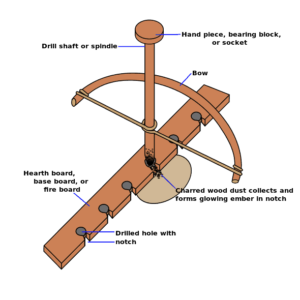In the world of outdoor survival, knowing how to start a fire without matches or a lighter can be a crucial skill. Whether you find yourself stranded in the wilderness or simply want to impress your friends on a camping trip, being able to start a fire using alternative methods can come in handy. In this article, we will explore some of the best techniques for starting a fire without matches or a lighter. From primitive methods like friction fire starting to modern tools like fire starters and solar fire starting, we’ll cover it all. So get ready to learn some new skills and become a master at starting fires the old-fashioned way!
If you’re curious to learn more about the art of fire starting without matches or a lighter, this article has got you covered. We will delve into various techniques and tools that can help you create a spark and ignite flames without relying on traditional fire-starting methods. Whether you’re a beginner seeking basic knowledge or an experienced survivalist looking to expand your skills, this comprehensive guide will provide you with the information you need. So sit back, relax, and get ready to discover the best methods for starting a fire without matches or a lighter. Starting a fire without matches or a lighter can be a useful skill to have, especially in emergency situations or outdoor adventures. There are several friction-based, lens-based, chemical-based, and electricity-based methods that you can use. Additionally, natural materials and survival fire starters can help you ignite a fire. In this article, we will explore these methods and provide safety tips and practical considerations.
Friction-Based Methods
One of the oldest and most primitive ways to start a fire is by using friction-based methods. These methods involve rubbing two materials together to create enough heat to ignite a fire. Three common friction-based methods are the bow drill, hand drill, and fire plow.
Bow Drill
The bow drill consists of a bow, a spindle, a fireboard, and a socket. By using the bow to rotate the spindle against the fireboard, you create friction that generates enough heat to ignite tinder. This method requires practice and proper technique but can be very effective in starting a fire.
Hand Drill
The hand drill method is similar to the bow drill, but instead of using a bow, you rotate the spindle by hand pressure. This method requires even more skill and perseverance, as it can be physically demanding. However, with practice, you can achieve success and start a fire with this technique.
Fire Plow
The fire plow method involves using a wooden plank and a hardwood stick. By rubbing the stick back and forth along a groove in the plank, you create friction that generates heat. The heat eventually ignites the tinder material, allowing you to start a fire. This method requires strength and endurance, but it is an effective way to produce fire.
Lens-Based Methods
If you have a magnifying glass, a fresnel lens, or even a block of ice, you can use them as lenses to focus sunlight and ignite a fire. These lens-based methods rely on the principle of concentrating sunlight to generate heat.
Magnifying Glass
Using a magnifying glass to start a fire is a simple and effective method. By holding the magnifying glass at a precise angle and focusing the sunlight onto a small point, you can create enough heat to ignite a tinder bundle. This method works best on sunny days and requires patience and a steady hand.
Fresnel Lens
A fresnel lens, which is a flat lens with concentric rings, can also be used to start a fire. By reflecting and refracting sunlight, the lens concentrates the light onto a specific spot, creating heat. Position the fresnel lens correctly to focus the light, and with a little persistence, you can ignite a fire.
Ice Lens
It may seem counterintuitive, but a block of ice can be used as a lens to start a fire. By shaping the ice into a lens shape and using it to concentrate sunlight, you can generate enough heat to ignite tinder. This method works best when the ice is clear and free from impurities.
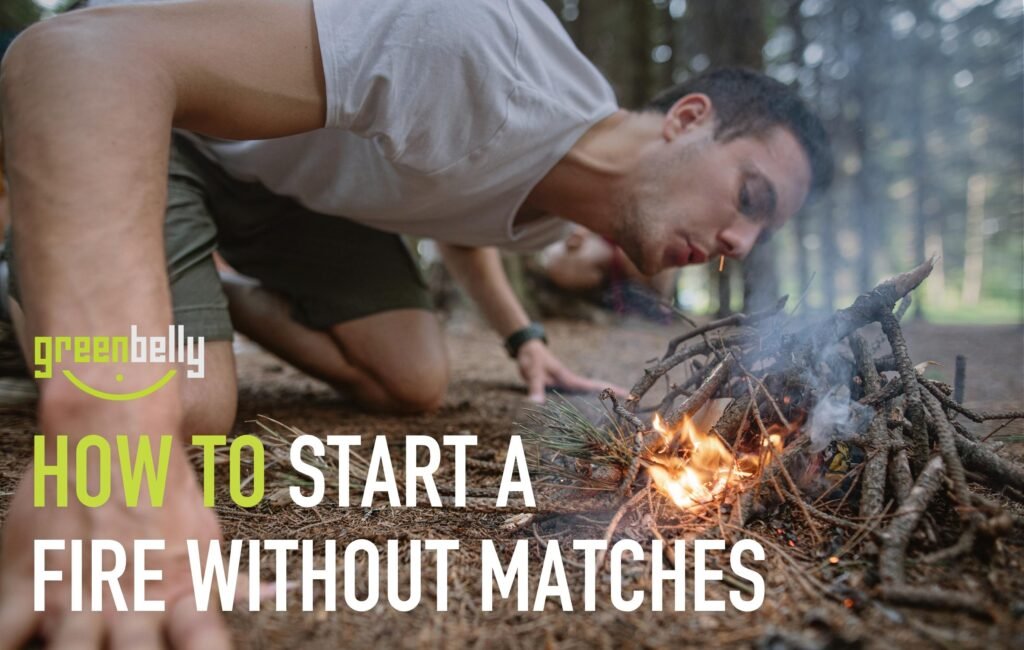
This image is property of cdn.shopify.com.
Chemical-Based Methods
Chemical-based methods involve using specific chemical reactions to create heat or sparks that can ignite a fire. Two common chemical-based methods for starting a fire are using potassium permanganate and glycerin, or using magnesium and a ferrocerium rod. Another chemical-based method involves using sodium and water, but caution must be exercised when using it.
Potassium Permanganate and Glycerin
By combining potassium permanganate and glycerin, a chemical reaction occurs that produces enough heat to ignite tinder. This method is simple, but it requires careful handling of the chemicals, as they can be hazardous if not used properly.
Magnesium and Ferrocerium Rod
A popular method for starting a fire is using a magnesium strip and a ferrocerium (ferro) rod. By scraping off shavings from the magnesium strip onto the ferro rod and then striking the rod with a knife or other sharp object, sparks are produced. These sparks ignite the magnesium shavings, which burn at extremely high temperatures, easily igniting the tinder.
Sodium and Water
Although sodium and water can react violently, under controlled conditions and in small quantities, they can generate enough heat to ignite a fire. However, this method should only be used by individuals with a thorough understanding of the chemical reaction and the necessary safety precautions.
Electricity-Based Methods
If you have access to batteries or piezoelectric devices, you can use them to generate sparks or heat that can ignite a fire.
Car Battery and Steel Wool
By connecting steel wool to the positive and negative terminals of a car battery, you create a circuit that generates enough heat to ignite the steel wool. Once the steel wool starts to burn, you can transfer it to a tinder bundle and blow gently to create a fire.
9-Volt Battery and Steel Wool
Similar to the car battery method, you can use a 9-volt battery and steel wool to start a fire. By rubbing the steel wool against the battery terminals, you create sparks that will ignite the wool. Transfer the burning wool to your tinder bundle, and with careful nurturing, you can establish a fire.
Piezoelectric Devices
Many pocket lighters and camping stoves have built-in piezoelectric devices. By pressing the button on these devices, you generate a spark that can ignite a fire. Simply direct the spark onto a tinder bundle, and with proper airflow, the fire will take hold.
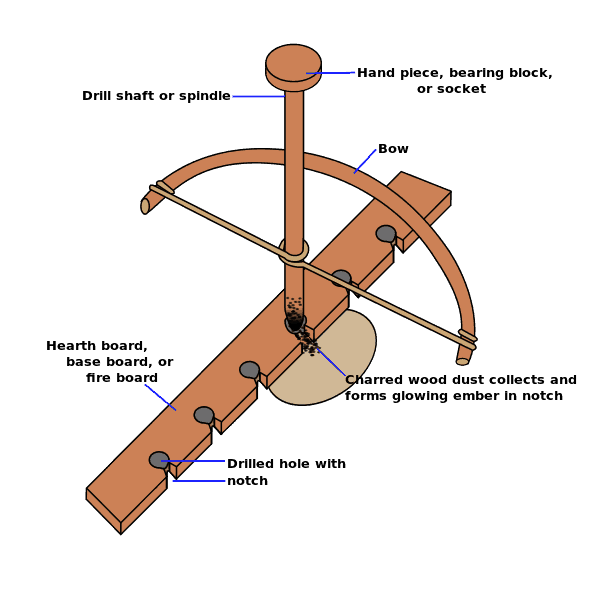
This image is property of www.primalsurvivor.net.
Natural Materials for Fire Starting
Nature provides us with various materials that can aid in fire starting. These materials are abundant in the wilderness and can be used to ignite a fire.
Tinder Fungi
Tinder fungi, such as chaga or birch polypore, are types of fungi that have a fibrous texture and easily catch fire. You can find these fungi growing on trees, and they can be used as excellent natural tinder to start a fire.
Char Cloth
Char cloth is made by heating a piece of cotton fabric in an airtight container until it chars, but doesn’t burn. Once cooled, char cloth can easily be ignited by sparks or heat, making it an excellent fire starting material.
Fatwood
Fatwood, also known as pine resin or lighter wood, is the resin-rich heartwood of pine trees. It contains high amounts of flammable resin that can be used as tinder to start a fire. Fatwood is a reliable and readily available natural fire starter.
Survival Fire Starters
In addition to natural materials, there are also specialized fire starters designed for survival situations. These tools are compact, easy to use, and highly effective at starting fires.
Fire Pistons
A fire piston is a small tube with a plunger that creates heat through compression. By rapidly pushing the plunger, you create enough heat to ignite a small piece of tinder. This method requires some practice, but once mastered, it can be a reliable fire starting tool.
Fire Steel
A fire steel, also known as a ferro rod or flint and steel, is a rod made of ferrocerium alloy. By striking the rod with a sharp object, such as a knife, you create sparks that can ignite your tinder material. Fire steels are durable, long-lasting, and can be used in various weather conditions.
Survival Lighters
Survival lighters, such as waterproof and windproof lighters, are compact and reliable fire starting tools. They often come with additional features like built-in compasses and storage compartments for emergency items. These lighters are designed to withstand harsh conditions and provide a consistent flame.
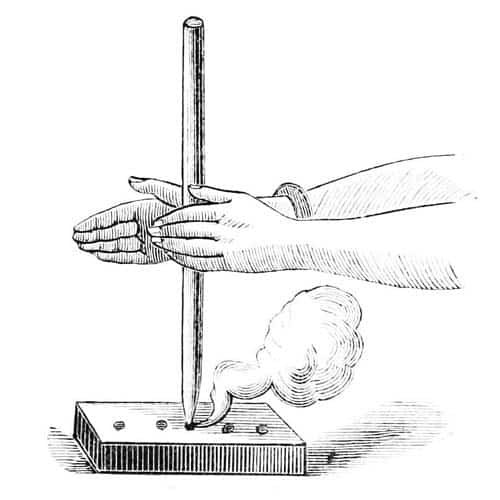
This image is property of www.primalsurvivor.net.
Fire Starting Techniques
While knowing the various methods and fire starters is important, understanding different fire starting techniques is equally crucial. Here are three commonly used techniques:
Feather Stick Method
The feather stick method involves using a knife to create thin curls or shavings on a stick. By creating a larger surface area, these curls catch fire more easily, facilitating the fire starting process. Arrange the feather stick above your tinder bundle and ignite it to initiate the fire.
Fire Bundle Technique
The fire bundle technique involves tightly packing dry tinder materials together to create a bundle. This bundle is then ignited using a spark, flame, or heat source. The bundle allows the fire to establish itself and grow, providing a stable source of heat.
Upside-Down Fire Method
The upside-down fire method is an effective technique for starting fires that burn for a long time. Instead of placing tinder on top of kindling and fuelwood, you invert the order. Start by placing fuelwood at the bottom, followed by kindling, and finally, tinder at the top. Ignite the tinder, and the fire will gradually burn downwards, ensuring a sustained fire.
Safety Tips for Fire Starting
When starting a fire, it is essential to prioritize safety to avoid accidents or the uncontrolled spread of fire. Here are some safety tips to keep in mind:
Selecting a Safe Fire Site
Choose a fire site away from flammable materials, such as dry grass, leaves, or overhanging branches. Clear the area around the fire site to create a safe zone and prevent the accidental spread of fire.
Clearing Away Flammable Material
Remove any flammable materials within a reasonable distance from the fire site. This includes dry leaves, twigs, or any other potential fuel sources. Keep a clear area surrounding the fire, free from debris that can ignite and cause the fire to spread.
Having a Water Source Nearby
Always have a water source nearby, such as a bucket of water or a fire extinguisher. This allows you to quickly extinguish the fire if it becomes too large or starts to spread uncontrollably. Additionally, having water readily available can help you cool down the fire site after you are done.

This image is property of i.ytimg.com.
Practical Considerations
In addition to the specific methods and techniques, there are also practical considerations to keep in mind when starting a fire without matches or a lighter.
Gathering Materials in Advance
Before you need to start a fire, it is wise to gather the necessary materials and have them readily available. Collect dry tinder, kindling, and fuelwood beforehand, so you are prepared and save valuable time in emergency situations.
Practice and Familiarity with Fire Starting Methods
Like any skill, fire starting requires practice to become proficient. Take the time to practice the different methods and techniques in a controlled environment before relying on them in real situations. Familiarity with the methods will increase your chances of success when you need to start a fire.
Emergency Fire Starting
In emergency situations, having a reliable fire starter readily available can be a lifesaver. Consider including a fire starter kit or tool in your emergency supplies or survival gear. This ensures you have a dependable method for starting a fire during critical moments.
Conclusion
Knowing the best methods for starting a fire without matches or a lighter is essential for outdoor enthusiasts, survivalists, and anyone seeking self-reliance. Whether you prefer friction-based, lens-based, chemical-based, or electricity-based methods, there is a variety of techniques to choose from. It is important to prioritize safety and practice these methods in advance to increase your chances of success. With the right knowledge, tools, and skills, you can confidently start a fire without matches or a lighter whenever the need arises. Stay prepared, stay safe, and enjoy the warmth and comfort of a well-lit fire in any situation.
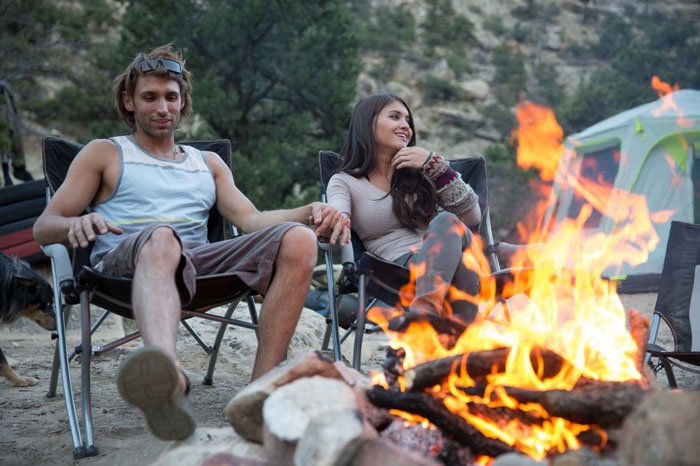
This image is property of eurekacamping.johnsonoutdoors.com.
